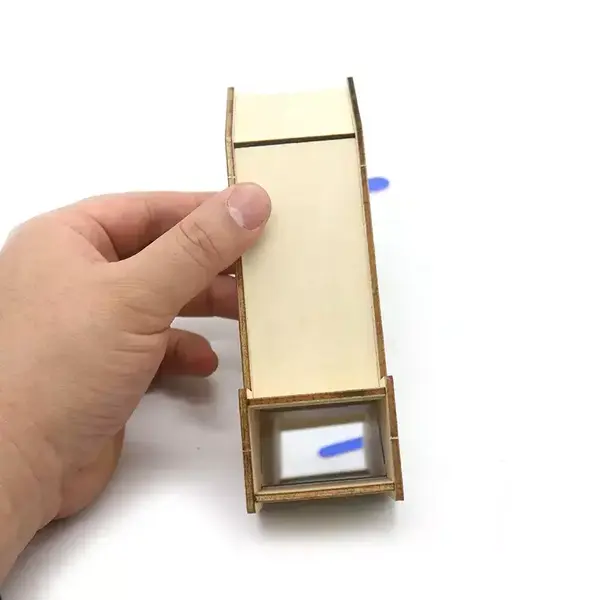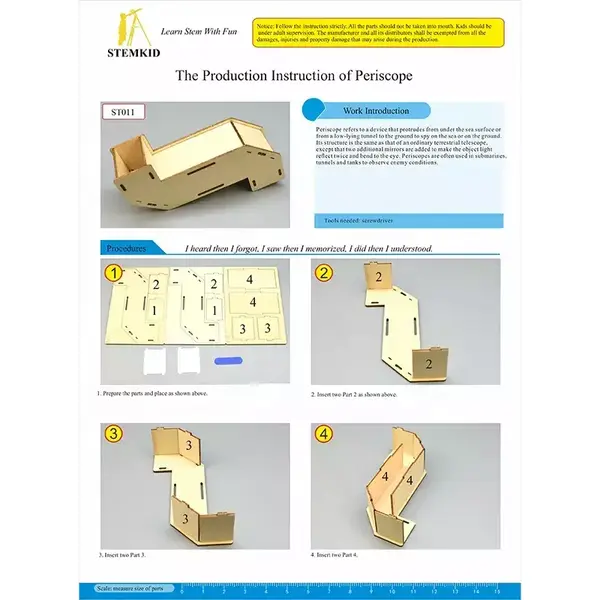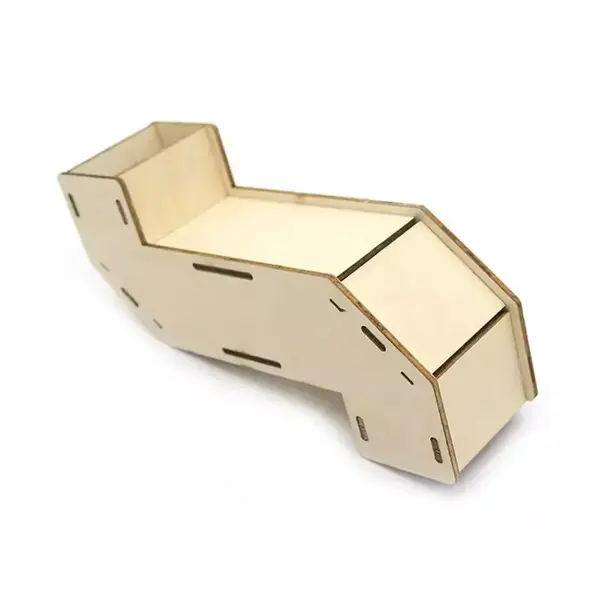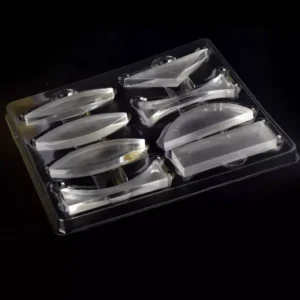Product Details
Reviews
Product Details
Objective:
Demonstrate a model of a Periscope to explain the reflection of light and the principles of periscopes in optical systems.
Materials included:
A periscope case
two mirrors
Materials not included in the kit:
Procedure and assembly steps:
Procedure included in the kit manual . This is not a ready made product. Student needs to follow the steps to assemble the model…
Description:
Creating a periscope model can be an educational and fun project for children aged 6 to 9. While it doesn’t directly involve energy transformation, it’s a great way to introduce them to the principles of reflection and optics. Here’s how to make a simple periscope model:
Materials Needed:
- Two small rectangular mirrors (approximately 2 inches by 3 inches)
- Cardboard or a small cardboard box
- Scissors
- Tape or glue
- Ruler
- Pencil
- Decorative materials (markers, stickers, etc.)
- Prepare the Mirrors:
- Take one of the mirrors and place it flat on a table with the reflective side facing up.
- Place the other mirror on top of the first one so that the reflective sides are facing each other. This will create a 90-degree angle between the two mirrors.
- Use tape or glue to secure the mirrors together at this angle, forming an “L” shape.
- Create the Periscope Housing:
- Take the cardboard or cardboard box and cut out two rectangular pieces that are roughly the same size as the mirrors.
- On one of the cardboard pieces, draw a rectangle near the top. This will be the viewing window for the periscope. Cut out this rectangle.
- Assemble the Periscope:
- Attach the “L” shaped mirrors to the inside of the cardboard box so that one mirror is facing the viewing window and the other mirror is facing the bottom of the box.
- Ensure that the mirrors are aligned properly and securely fastened.
- Decorate the Periscope:
- Encourage the children to decorate the outside of the cardboard box with markers, stickers, or any other decorative materials they like.
- Test the Periscope:
- Take the periscope to a well-lit area and look through the viewing window. You should be able to see objects that are not in your direct line of sight by using the mirrors to reflect the image.
- Experiment with Reflection:
- Have the children experiment with their periscope by looking at various objects and angles. They can observe how the mirrors reflect images and how the periscope allows them to see around corners.
Learning outcome:
Have a better understanding of a Periscope to explain the reflection of light and the principles of periscopes in optical systems using the model built by the student in this project
Section or subject:
Physics
Grades:
6+
Reviews
Be the first to review “Periscope model” Cancel reply



















Reviews
There are no reviews yet.